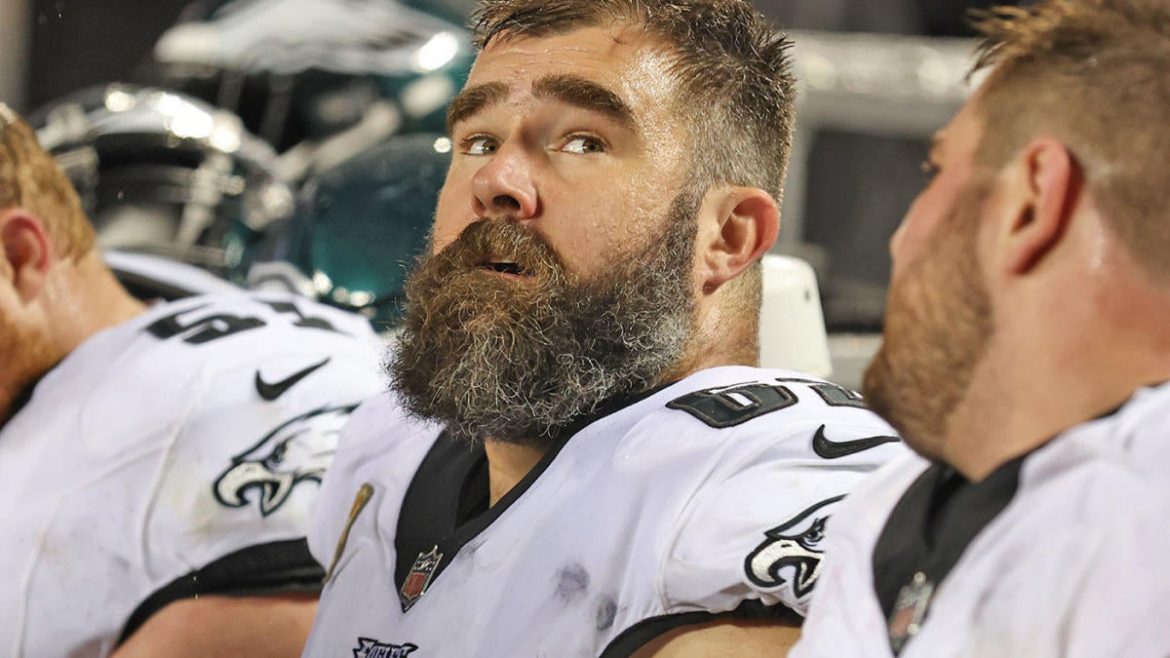Jason Kelce and the Battle to Preserve the “Tush Push” in the NFL
Over recent weeks, one of the most talked-about and contentious plays in professional football—the “Tush Push”—has faced potential elimination from the NFL rulebook. At the center of this debate is former Philadelphia Eagles center Jason Kelce, whose passionate defense of the play reveals not just the strategic importance of the move, but also broader tensions around tradition, player safety, and the evolving nature of the game.
What Is the “Tush Push” and Why Does It Matter?
The “Tush Push” is a quarterback sneak variant where teammates drive their quarterback forward by pushing him into the line of scrimmage to gain short-yardage first downs or touchdowns. Popularized by the Eagles starting in the 2022 season, particularly with quarterback Jalen Hurts, the play quickly became emblematic of their offensive identity and success. It was a high-percentage, power-play move that combined brute force with teamwork—useful in clutch moments near the goal line.
However, since its rise, the “Tush Push” has attracted controversy. Critics argue it can increase risks of injury by creating dangerous pile-ups and placing excessive strain on players at the line. Others contend it conflicts with the spirit of fair play or grants an unfair advantage. The NFL, prioritizing player welfare and competitive balance, deliberated on banning the maneuver, stirring strong reactions among fans, players, and team representatives alike.
Jason Kelce: The Defender at the Forefront
Jason Kelce has taken a proactive role in championing the “Tush Push.” This isn’t simply a case of defending a tactical play; Kelce, a former Eagles stalwart and recognized one of the best centers in NFL history, sees the “Tush Push” as integral to what made the Eagles effective and unique.
Traveling to Minneapolis on a critical week, Kelce personally lobbied the NFL owners to reconsider or halt the ban proposal. On his “New Heights” podcast with his brother Travis Kelce, he’s articulated why calls to eliminate the play are “kind of bogus,” especially objections centered on supposed health risks. He argues that the play embodies physical toughness and teamwork without unnecessary danger beyond standard football contact.
Further, Kelce seeks to clear misconceptions about the “Tush Push,” emphasizing it’s not reckless or rule-breaking but a legal and strategic facet of the game. His willingness to step into the league meetings underlines a sincerity and urgency rarely seen from retired players. It’s about preserving a play that represents more than yardage: it’s a symbol of identity for the Eagles and an example of football’s evolving creativity.
The Broader NFL Discussion and Consequences
While the “Tush Push” debate is focused, it speaks to a wider NFL conversation around rules management, player safety, and competitive integrity. The league has increasingly sought to minimize violent collisions and injuries, implementing numerous rule changes in recent years. Yet, it must also balance these concerns with the game’s essence: physicality, strategy, and excitement.
Owners, coaches, players, and commentators have been weighing in. Some see the play as a captivating innovation, while others label it as a loophole exploit. The final decision on the ban, expected soon, will set a precedent about where the NFL draws the line between tradition and change.
Jason Kelce’s testimony, backed by the Eagles and supporters, undoubtedly adds weight to the discussion. Philly fans and football analysts praise his leadership in navigating this moment, portraying him as a guardian of a cherished football craft and a voice for fairness.
The Human and Cultural Layers
Beyond the technical and regulatory, the debate touches on human stories. The Kelce brothers themselves—Jason and Travis—have become cultural icons, bridging fanbases and offering insights through their joint podcasts and personal stories. Their engagement with the “Tush Push” fight humanizes the issue, showing how deeply teammates and legends care about the game’s fabric.
Moreover, the recent Super Bowl LIX victory, where Jalen Hurts was MVP and the “Tush Push” was a hallmark in the Eagles’ offense, adds emotional resonance. It’s a victory narrative that clashes with potential erasure of a signature maneuver, fueling passionate responses.
Conclusion: The Crossroads of Tradition and Progress
The fate of the “Tush Push” is more than a clause about yardage or technique; it is a reflection of football’s ongoing negotiation between innovation and preservation. Jason Kelce’s determined advocacy underscores that sometimes, the most compelling defense isn’t just on the field but in the boardroom where legacies and rules are shaped.
Whether the play remains or is banned, the discussion exemplifies football’s living history—where strategic brilliance, player safety, and cultural identity intersect. Jason Kelce’s fight to save the “Tush Push” will be remembered as a defining moment where the heart of a player met the pulse of the league.





